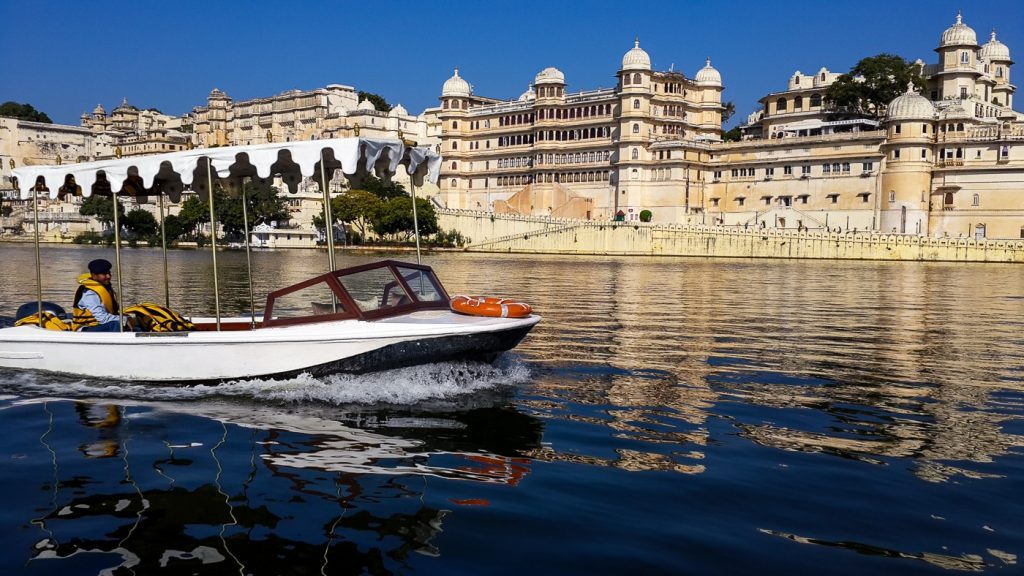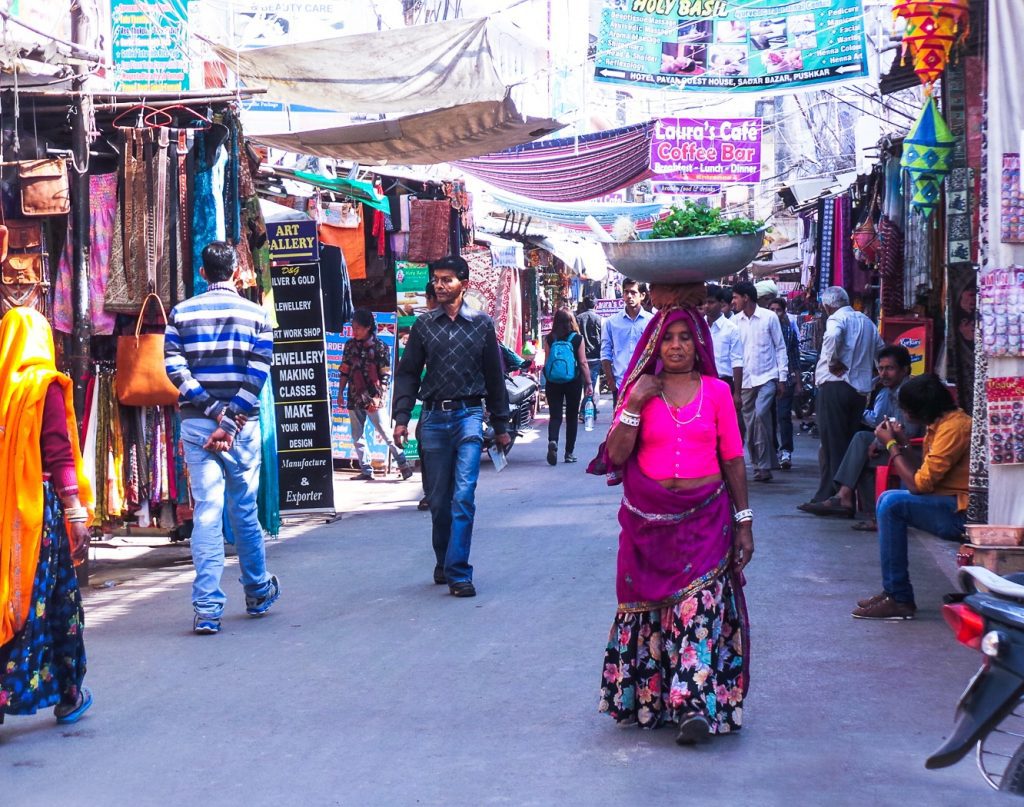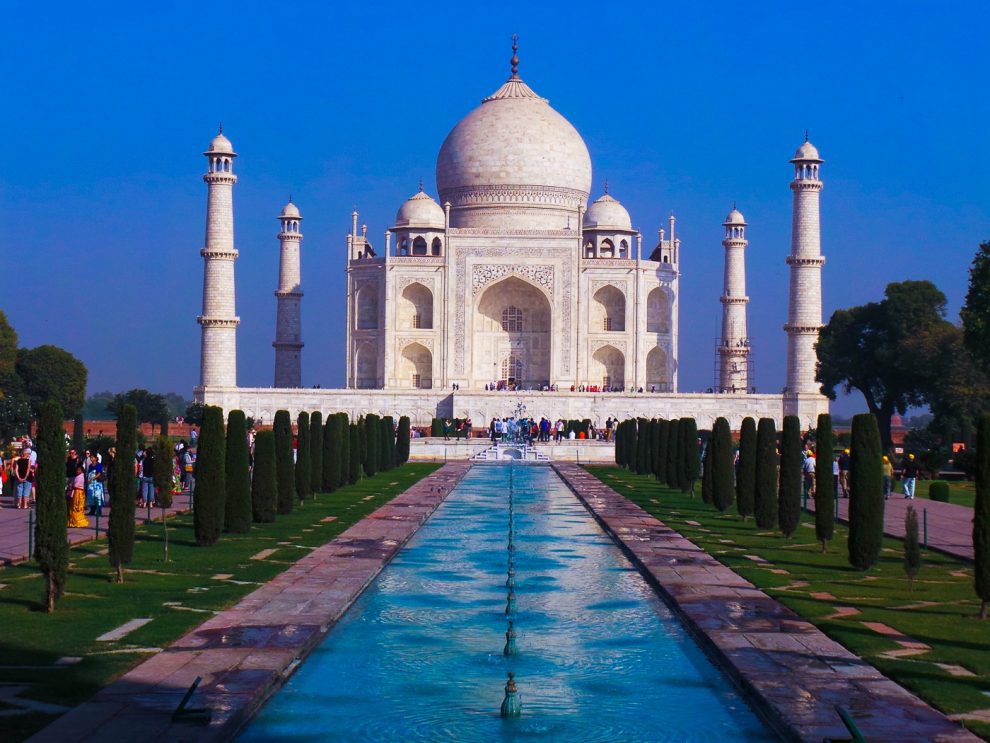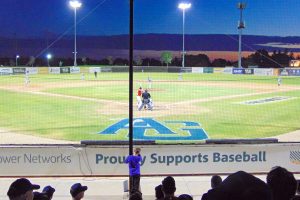Len Rutledge: “I am sitting in front of the Taj Mahal absorbing the magic of the world’s most beautiful building. India’s crowds, chaos and poverty are temporarily relegated to the back of my mind as I let this piece of paradise into my soul”.
India is a country of enormous contrasts where poverty sits beside wealth, beauty intermingles with filth, and structure and chaos compete for supremacy. It will dazzle all your senses and cause you heart-ache at the same time.
It can be challenging and charming, overwhelming and stunningly beautiful. The eager friendliness of the people is endearing, and the food is unforgettable but there is likely to be unexpected glitches no matter how much you plan.
India is a large country and the one with the second largest population in the world. It really is many countries all rolled into one. If you lay a map of India over a map of Europe you will see that it covers the area from Scandinavia to North Africa and from Spain to Russia. It is one of the world’s oldest living civilizations yet the present nation-state is just over 70 years old.
Just like Australia, it is difficult to see the whole country in one visit. That is why my wife and I restricted ourselves to a part of north-west India, known better as the Extended Golden Triangle, on our recent visit. There were many highlights.
Delhi, India’s capital, is dotted with mosques, forts, and monuments left over from the Mughal rulers that once occupied the city but there are also some more modern temples and other buildings. The contrast between rambling Old Delhi and well planned New Delhi is immense, and it’s interesting to spend time exploring both.

Udaipur, in Rajasthan, is sometimes called the most romantic city in India because of its famed lakes and palaces. The City Palace complex, the architecturally splendid Bagore Ki Haveli, and Lake Pichola with its beautiful Lake Palace Hotel are just some of the ‘must-see’ sights. We loved it.

Jodhpur is famous for its blue buildings and for the unusual pants worn by a polo team when visiting England in 1897. The impregnable Mehrangarh Fort, which rises above the city, is one of the largest forts in India.
Also here is the magnificent Umaid Bhawan Palace, one of the last great palaces to be built in India. The royal family of Jodhpur still occupies a section of it but most has been converted into a luxury hotel. Nearby Mandore was the capital of the Marwar region before Jodhpur was founded.
Pushkar is a sleepy little holy town that attracts a lot of backpackers and hippie types and is one of the most visited pilgrimage places in India. Surrounding by hills on three sides, Pushkar abounds in temples and is centred on the lake which has mythological importance.

Pushkar Camel Fair, Rajasthan’s most famous festival, is held here late October or early November depending on the moon and it attracts 200,000 visitors from around the world.
India’s desert capital of Jaipur, known as the Pink City because of the pink walls and buildings of the old city, lures visitors with its stunning ancient palaces and forts. It is an excellent place to shop for gemstones, silver jewellery, bangles, clothes, blue pottery, and textiles.

Nearby Amber Fort is set on a hill top overlooking Maota Lake and it is accessed on the back of elephants. It was the original home of Rajput royalty until Jaipur city was constructed and it is now a much-enjoyed attraction.
There are quite a few worthwhile places to visit in Agra and around, apart from India’s most famous monument — the Tāj Mahal. The many interesting remnants of the Mughal era will surprise you and the crazy, congested bazaars of the Old City will fascinate you.
Don’t miss a visit to majestic Agra Fort, Mehtab Bagh known as the Moonlight Garden, and the tomb of Itimād-ud-Daula or ‘Little Tāj’.
Indian food is widely perceived as being predominantly vegetarian but in fact less than half of the Indian population is vegetarian. In the past, the abstinence from meat eating has often been an economic consideration because many people could not afford meat.
As India improves economically, the consumption of meat is increasing and the variety of cuisines available to the visitor has sky-rocketed. We were delighted with much of the local food and with the people who cooked and served it.
The Golden Triangle region has accommodation costing from $18,000 (no this is not a misprint) to $2 per night. Naturally the quality and experience varies widely. We generally used economical 3-star accommodation and were happy wherever we went.
India has some of the best and most expensive hotel rooms in the world and the facilities and service are virtually unmatched anywhere. On a couple of nights we lived like royalty at reasonable cost in restored palaces that are now hotels. That experience will long be remembered.





















Add Comment